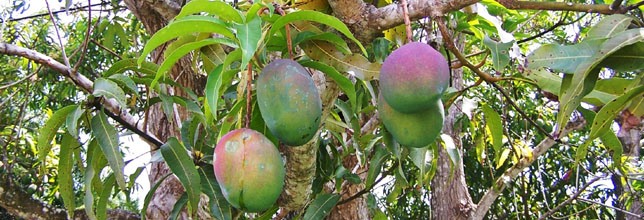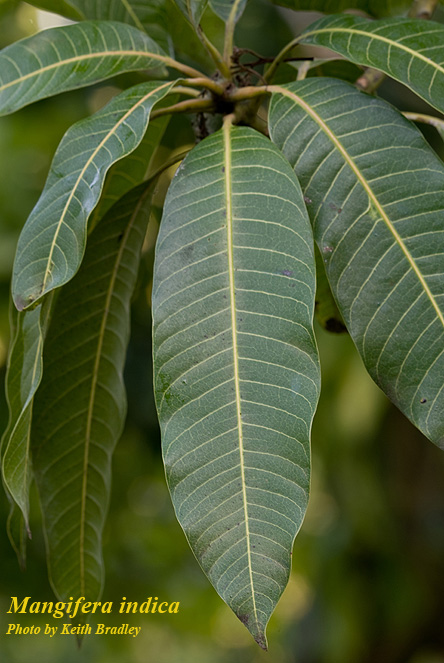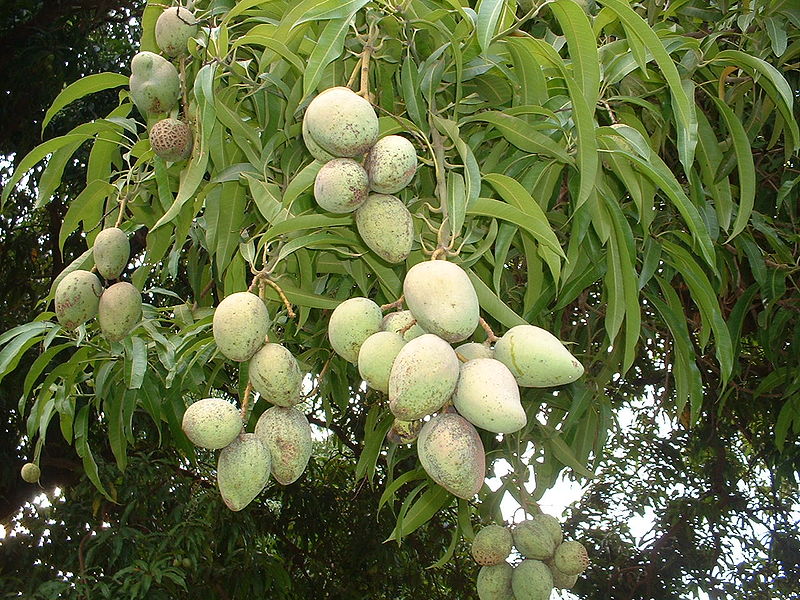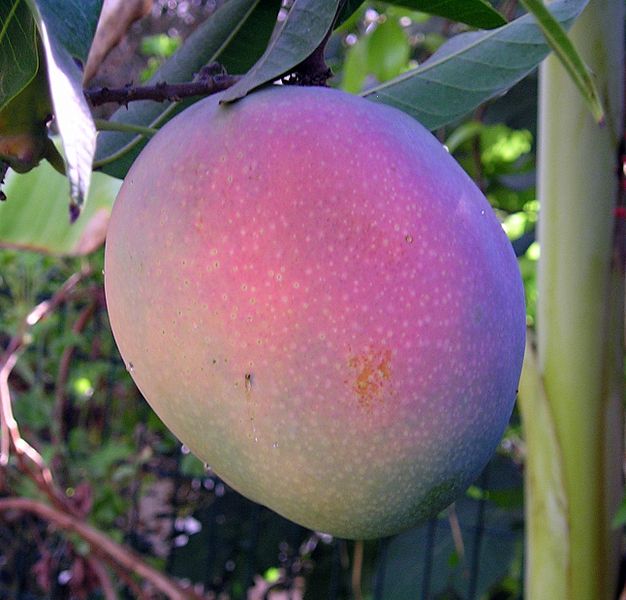
Survival Techniques
Deep Tap Root
The mango plant consists of a long tap root that can reach up to
6 feet deep. This unique feature allows the mango to survive
in semi-drought conditions, like an eight month dry period.

Tough Leaves
Mango leaves are equipped with a thick outer cuticle to prevent
water and nutrient loss. Also, mango leaves are found
alternating on the plant stem to maximize the light energy received
from the sun. This is due to the fact that mangos grow best in
full sun.
Flowers
As a member of the phylum Anthophyta, the mango tree produces
flowers to attract pollinators. The flowers, containing the
five petals typical of a dicot plant, are also radial symmetric.
These flowers produce a sweet smell which attracts insects to the
tree. This allows the insects to carry pollen from tree to
tree thus fertilizing the tree and allowing for reproduction to
occur.
The mango tree produces true fruits, which protect the mango seed found at the center. This fruit develops from the ovary after fertilization occurs. Although a means of protection, the fruit is also a great nutrition source for many animals, such as the orangutan!


Resin Ducts
These ducts, found on mango stems, prevent the plant from wilting in extended periods without rain.
Irregular Fruiting Patterns and Fruit Drop
Depending on the environmental conditions, the mango plant will release its fruit at varied times. For example, in dry conditions extreme fruit drop will occur to protect the tree as a whole from the dangerous conditions.
Hypotrophic Lenticels
The mango has developed a unique method to deal with periods of flooding. In cases of high water, the mango tree produces swollen lenticels on the trunk above the waterline. These nodes help in removing toxic byproducts produced when the plant is forced to undergo anaerobic metabolism.
Even though the mango is highly adapted for its environment, it still must employ a complex process to find food. See nutrition to understand how this organism eats or return home!